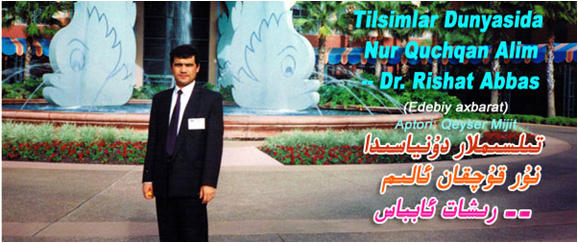Palejge dawa
Ghol hujeyre bilen kisel dawalash belkim Jonggoda eng burun emillishi
mumkin. Amerika we gherip dowletliride
ilip birilghan kopligen tibbi tetqiqatlar, eng deslepki hujeyre basquchidin,
haywan basquchigha, andin ademde sinaq qilish basquchigha
kiridighan bolup, buninggha eng kem digende 10 - 15 yil waqit kitidu. Amerkida
ghol hujeyre bilen xili kop kisellerni dawalashta, kichik we chong
chashqanlarda ilip birilghan tetqiqatlarda bezi koz korunerlik muhapiqeyetler
qazan'ghili xili uzun bolghan bolsimu, biraq insanlarda nahayti cheklik dahirde
sinaq qilinmaqta.
Jonggoda bolsa keng dahirde sinaq qiliniwatqan bolup,
towendiki ulanmidiki xewerde yulun zexmilinip palej bolghili 7 yil bolghan 20
bimarni ghol hujeyre bilen dawalash arqiliq ularning 15 qayta mangghanliqi
xewer qilinghan. Eger bu ras bolsa, palejni ghol hujeyre bilen dawalashtiki
tunji muhapiqiyet bolushi mumkin.
http://timesofindia.indiatimes.com/home/science/Doctor-claims-breakthrough-in-race-for-spinal-cure/articleshow/20782316.cms

After progress in a second round of tests using stem cells to regrow nerve fibres, the China Spinal Cord Injury Network (ChinaSCINet) has applied for regulatory approval in China for a third and final phase, which it hopes to start in the autumn.
Doctor claims breakthrough in race for spinal 'cure'
HONG KONG: A leading researcher into severe spinal cord injuries today said trials for stem-cell therapy showed groundbreaking results in giving immobile patients the ability to walk again.
After progress in a second round of tests using stem cells to regrow nerve fibres, the China Spinal Cord Injury Network (ChinaSCINet) has applied for regulatory approval in China for a third and final phase, which it hopes to start in the autumn.
"This will convince the doctors of the world that they do not need to tell patients 'you will never walk again'," US-based doctor Wise Young, chief executive officer of ChinaSCINet, told AFP.
He said that 15 out of 20 patients in the Chinese city of Kunming, who received umbilical cord blood cell transplants and intensive walking therapy, were on average able to walk with minimal assistance seven years after complete spinal cord injury.
"It's the first time in human history that we can see the regeneration of the spinal cord," Young said.
The treatment involves injecting umbilical cord blood mononuclear cells into patients' damaged spines to help regenerate nerves, while lithium is used to promote the growth of the nerve fibres.
Each component of the combination therapy will be tested in the third phase, which Young said would involve 120 patients in China and another 120 across India, Norway and the United States.
"If the phase three trial is successful, we should have achieved worldwide regulatory approval by the beginning to the middle of 2015," he said.
ChinaSCINet, a non-profit organisation that calls itself the world's largest clinical trial network for spinal cord therapies, was established in Hong Kong in 2005.
"Hong Kong is going to be way ahead of all the other countries if the spinal cord injury trial turns out to be positive," Young said. "That means Hong Kong will be the centre for stem-cell therapies."
Young also said China is investing heavily into stem-cell research, while the technology remains highly controversial in the United States because of the anti-abortion camp's concerns about cells derived from human embryos.

Comments
Post a Comment